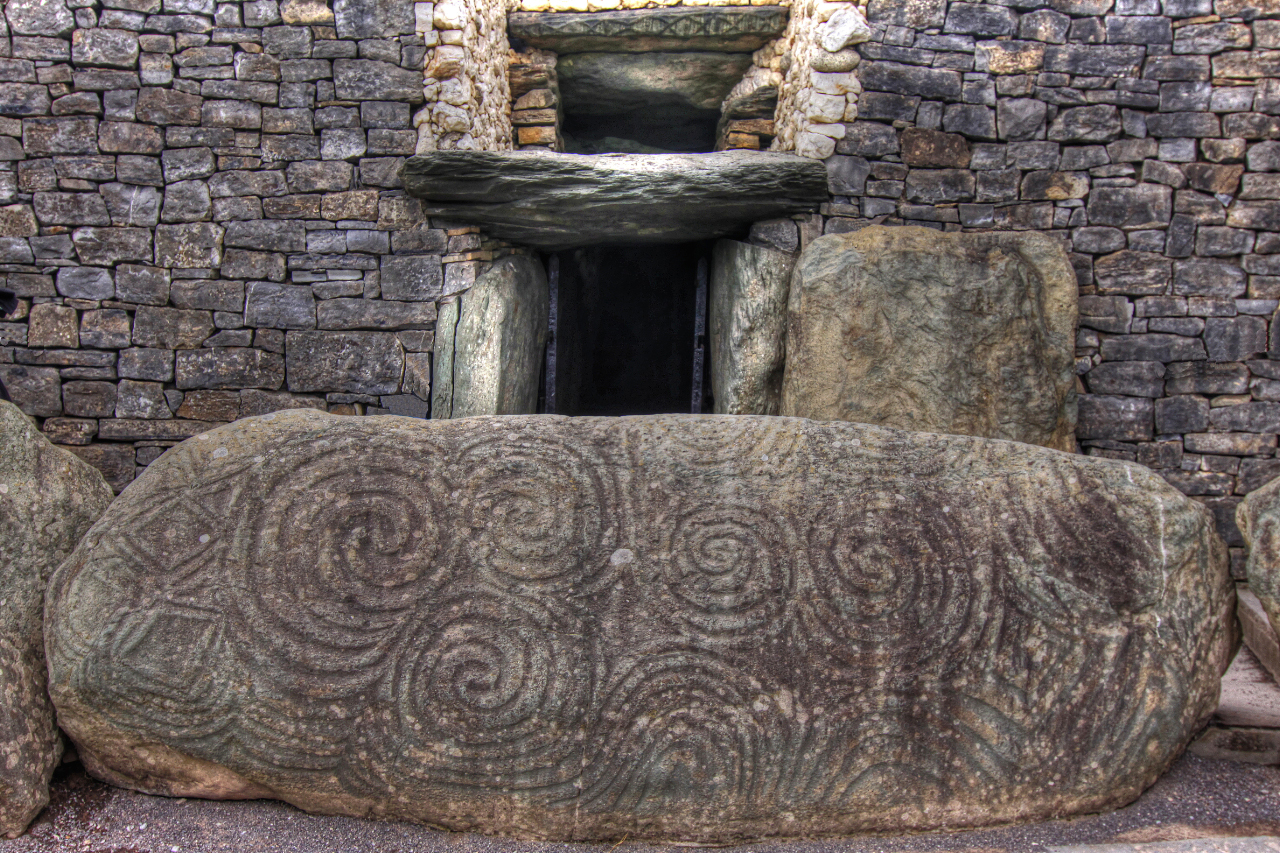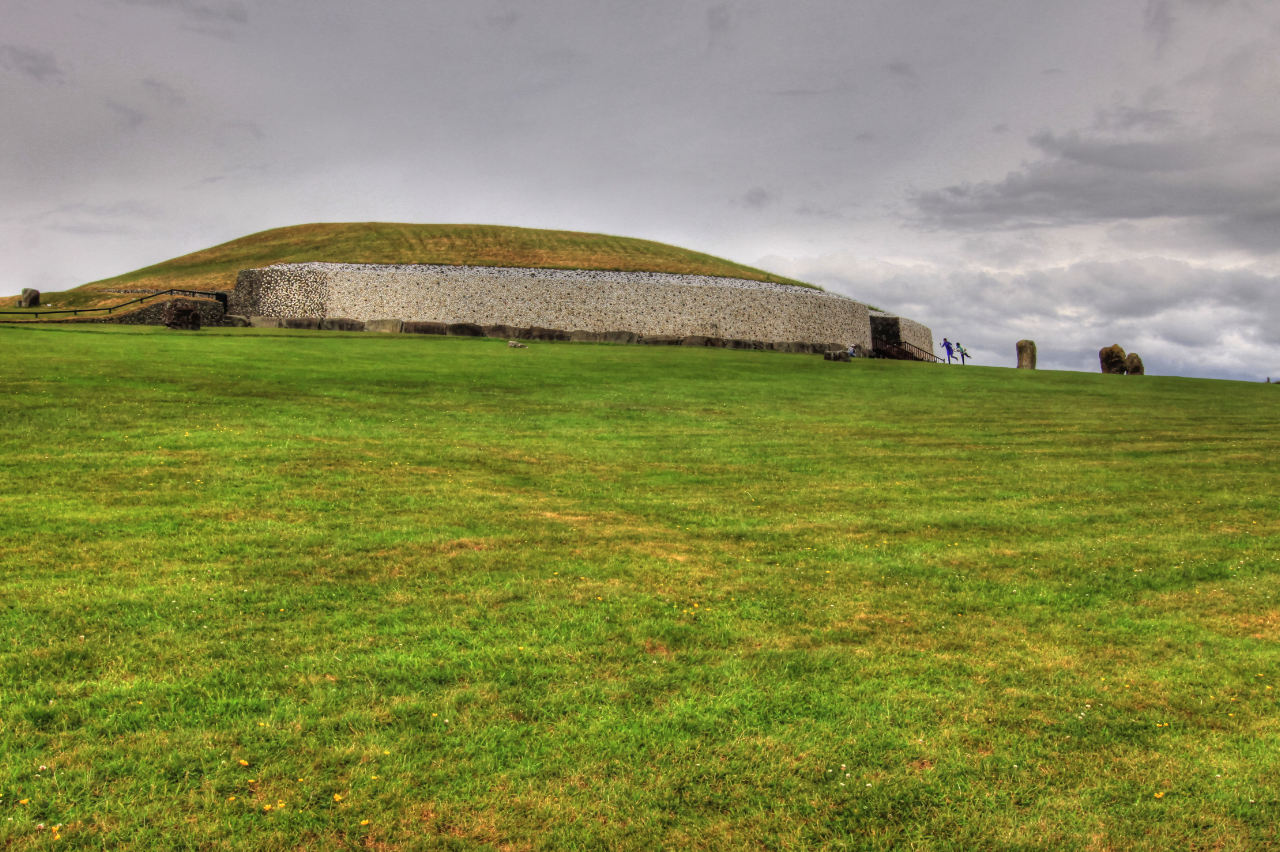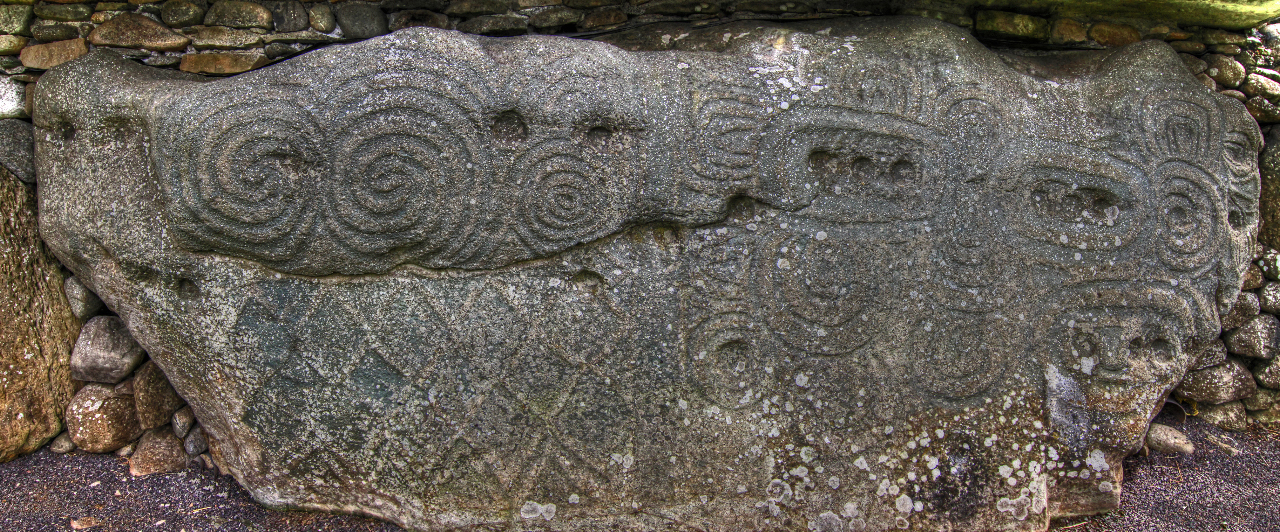Newgrange is a prehistoric monument on the eastern side of Ireland built around 3200 BC, during the Neolithic period. There is no agreement about what the site was used for, but it has been speculated that it had some form of religious significance because it is aligned with the rising sun on the winter solstice, which floods the central chamber with natural light. The mound in nearly 250 feet across and 40 feet high, and the central chamber is accessed through a portal behind the entrance stone, and then down a long narrow passage way. The central chamber contains several small alcoves that appear to be burial sites for the bones of the departed. The small window above the entrance portal has been precisely positioned and the passageway constructed to allow light to enter the central room at sunrise during the winter solstice. Newgrange is older than both Stonehenge and the great pyramids of Giza, and is a part of the Brú na Bóinne UNESCO World Heritage Site.
Newgrange contains various examples of abstract Neolithic rock art. These carvings contain circles, spirals, arcs, and dot-in-circles as well as rectilinear chevrons, radials, and parallel lines. The most notable example of art at Newgrange is the gigantic entrance stone. It is approximately 10 ft. long and 4 ft. high, and about 5 tons in weight. It has been described as “one of the most famous stones in the entire repertory of megalithic art.”


